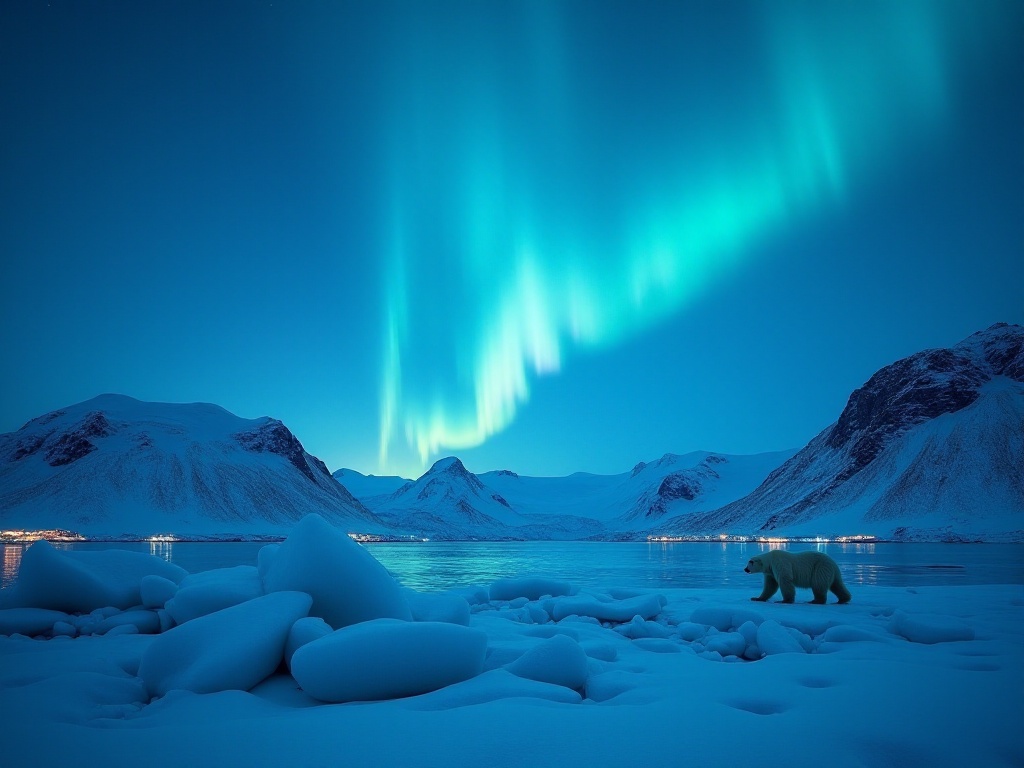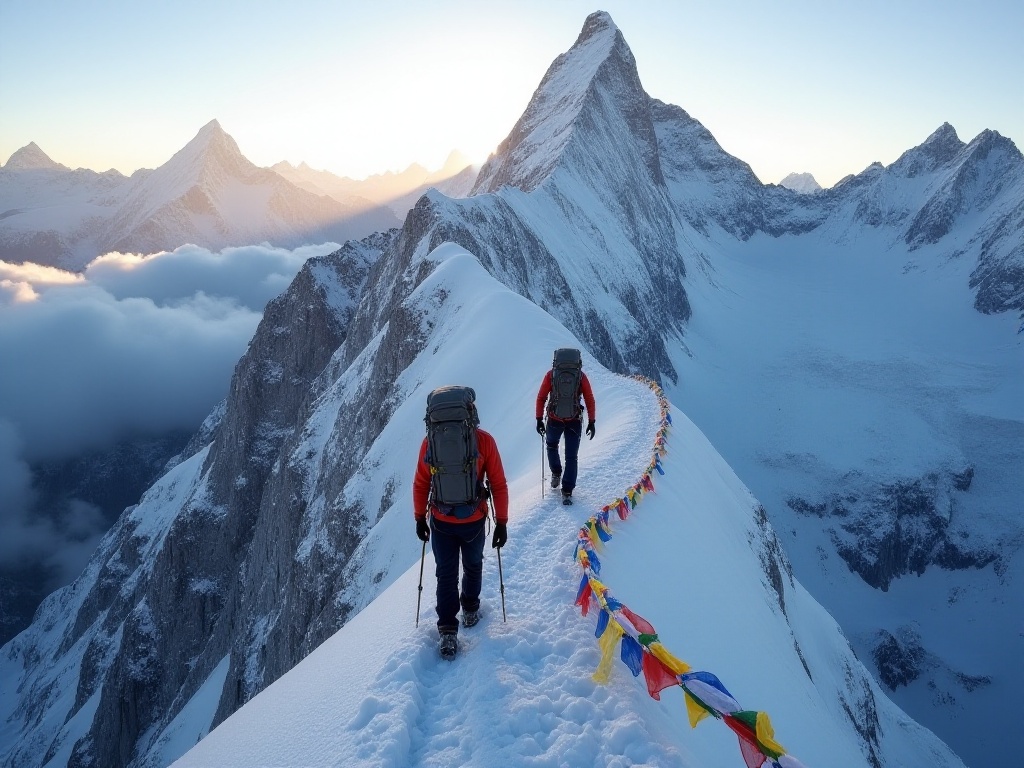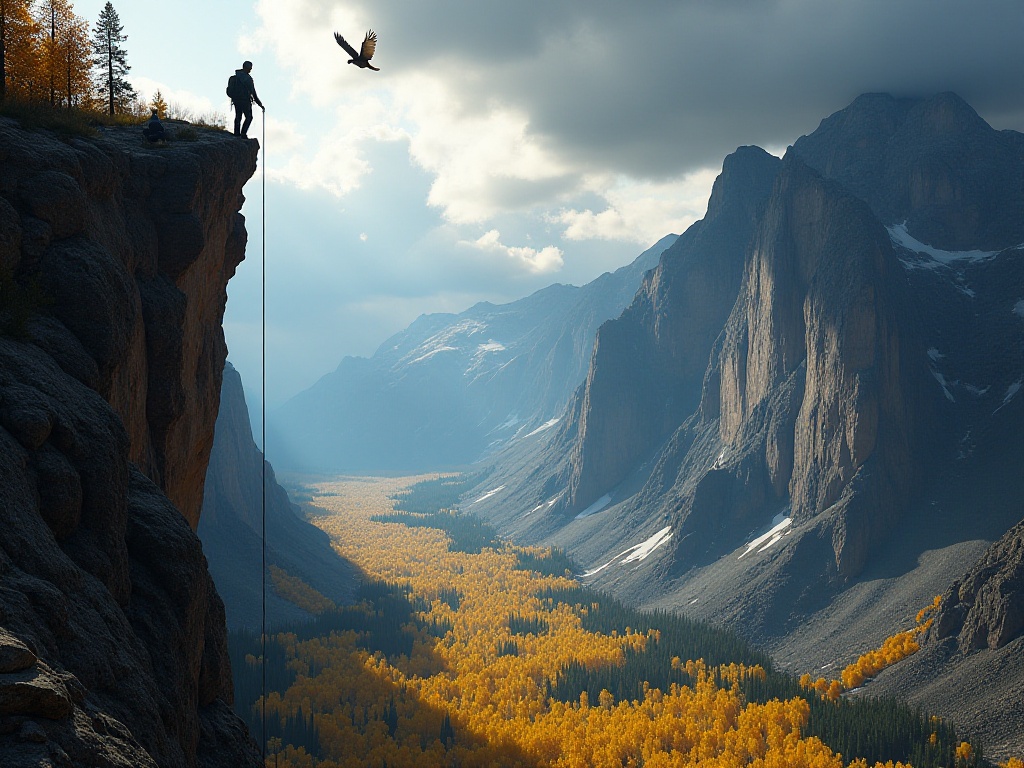Origins
On that clear morning in early 2024, as I stood at the Kathmandu airport gazing at the distant, hazy snow-capped peaks, my heart was racing with excitement. As a city dweller who grew up surrounded by concrete jungles, the anticipation of witnessing the world's highest peak for the first time kept me awake at night.
Looking back, the inspiration for this journey was remarkably simple. One day while browsing Xiaohongshu, I came across a vlogger's EBC trek post, showing spectacular views of clouds from the summit. I thought to myself: why not seize my youth and add this adventure to my life's bucket list?
I acted immediately! I opened my laptop and began researching everything about the EBC trek. The more I learned, the more I realized this wasn't as unattainable as I had imagined. At that moment, I was determined to take on this seemingly "impossible" journey.
Pre-Trip Preparation
Many people think EBC trekking is only for professionals, believing it's impossible for someone who can't even run 5 kilometers. However, I want to say that once you take that first brave step, everything else will fall into place.
I remember being anxious at first, worried about inadequate preparation. But I later discovered that the key was systematic preparation. For instance, I started researching guides three months in advance, joined several trekking groups, and sought advice from experienced hikers.
Through continuous learning and preparation, I gradually built confidence. I realized that mountaineering isn't exclusive to "hardcore enthusiasts" - ordinary people like us can conquer it too. As long as you're willing to invest time and effort in preparation, this seemingly distant goal isn't far at all.
Best Time to Visit
Choosing the right time is crucial! I had seen many people complaining online about not seeing anything at EBC, only to later realize they had chosen the wrong time. After thorough research and comparison, I finally decided to depart in October.
Why October? Firstly, it's Nepal's dry season with very stable weather. I remember we had bright sunshine throughout our journey with excellent visibility. Plus, October's temperature is perfect for trekking - not too hot during the day and not unbearably cold at night.
What surprised me most was the rhododendrons blooming everywhere in October. I'll never forget that day when we crossed a mountain ridge and suddenly encountered a vast sea of pink flowers with snow-capped mountains in the background - it was surreally beautiful. I thought: who would believe such beautiful flowers could exist at such high altitudes without seeing it themselves?

Physical Preparation
Physical preparation is probably what concerns most people. As an office worker with almost zero regular exercise, I initially thought I couldn't handle it. However, after two months of training, I discovered that improving fitness isn't that difficult if you progress gradually.
I scheduled my training like this: 5-kilometer runs in the park every Monday, Wednesday, and Friday after work. It was really tough at first - I was out of breath after just two laps. But after a month of persistence, I was amazed to find I could complete the whole distance with ease.
Weekend training was more interesting - I would go hiking in suburban mountains with like-minded friends. We started with empty backpacks and gradually increased the weight. Eventually, I could hike for 4 hours with an 8-kilogram pack without feeling particularly tired.
The most important thing during training is patience - don't rush for quick results. I've seen many people try to achieve everything at once, only to give up after a couple of days. Actually, if you improve just a little each day, you'll be amazed by the changes after two months.
However, I must remind everyone to balance exercise and rest. I learned this the hard way - once I trained too intensely and my knees hurt for several days. So it's essential to listen to your body's feedback; moderate training is the key.

Equipment List
Honestly, I was initially overwhelmed by equipment preparation. All those professional terms confused me: what's GTX? What's GORE-TEX? But after detailed research and comparison, I found that equipment wasn't as complicated as I had imagined.
First, hiking boots are absolutely essential. I tried several pairs in physical stores and finally chose ones half a size larger. The salesperson told me feet tend to swell during hiking, so shoes need some extra space. I started wearing these boots to work a month in advance, and by the time of the trek, I was completely comfortable in them.
Down jacket selection is also important. Although daytime temperatures are okay, they often drop below zero at night. I chose an 800-fill down jacket that was very warm yet compact when packed.
Trekking poles are absolutely lifesavers! Initially, I thought using them looked pretentious, but I discovered their importance when actually using them. They're especially helpful during descents, significantly reducing knee strain. I bought a pair of adjustable carbon fiber poles that were both lightweight and sturdy.
Other equipment like headlamps, thermos bottles, and sunscreen are all important, but you don't necessarily need to buy the most expensive ones. I found good value-for-money products online that worked well.
A special reminder is to bring enough warm clothing. I used the onion layering method: moisture-wicking base layer, fleece mid-layer, hardshell outer layer, and down jacket when needed. This way, you can handle any weather changes.

Route Planning
The 11-day itinerary might sound intimidating, but it's not so scary when broken down. Our route went from Kathmandu, flying to Lukla, then gradually advancing toward EBC.
The first day's journey from Lukla (2860m) to Namche (2610m) left a deep impression. Although we were descending in altitude, I still felt quite uncomfortable as it was my first time at high altitude. Breathing was difficult, and I wanted to rest after every few steps. Fortunately, our guide was very experienced and kept reminding us to slow down and drink plenty of water.
The second day from Namche to Namche Bazaar (3440m) was a challenging uphill trek. I remember setting out before dawn. We hiked with headlamps, step by step. When the sun rose and I looked back at our path, the feeling was truly overwhelming.
In the following days, we passed through Dingboche (4380m), Lobuche (4940m), and finally reached EBC (5364m). Each day's itinerary was adjusted based on everyone's condition, usually walking 4-6 hours. We also scheduled several days for altitude acclimatization, which made the pace very comfortable.
Dealing with Altitude Sickness
Altitude sickness is definitely an issue that must be taken seriously. I'll never forget that night in Namche Bazaar, lying in bed feeling extremely short of breath and uncomfortable. That's when I was particularly grateful for having done thorough homework beforehand.
I started taking Rhodiola a month in advance, and while I'm not sure about its effectiveness, it at least gave me psychological comfort. After reaching high altitude areas, we strictly followed the principle of "not increasing elevation by more than 500 meters per day" and ensured adequate rest time each day.
I've summarized several particularly useful tips for preventing altitude sickness. First, you must drink plenty of water, at least 3 liters per day. Second, control your exercise intensity - it's better to walk slowly than exhaust yourself. Going to bed early is also important as sleep quality directly affects the next day's condition.
Most importantly, you need to constantly monitor your physical condition. If you experience severe headaches, vomiting, or other symptoms, you must inform the guide immediately. I remember one member of our group had to descend early due to physical discomfort - although disappointing, it was a wise choice.

Spectacular Views
Honestly, the scenery along the way was breathtaking. I'll never forget the first time I saw Everest from Namche Bazaar. That morning, we had just climbed up to a viewpoint when suddenly the clouds parted and Everest's peak appeared before us. That sense of awe is truly indescribable.
Watching the sunset in Gorak Shep was also unforgettable. I remember that afternoon, we deliberately arrived at camp an hour early just to wait for this moment. When the setting sun's rays hit the snow-capped mountains, the entire peak turned golden. I took many photos, but none could fully capture that overwhelming beauty.
But what amazed me most was the starry sky at Kala Patthar. That night was particularly clear, and as we lay in our camping ground, we could see countless stars overhead. Watching the stars from over 5000 meters altitude made them seem close enough to touch. At that moment, all fatigue simply vanished.
We encountered many interesting things along the way. For instance, we often saw yak caravans carrying various supplies through the mountains. Sometimes we met foreign trekkers, and although we couldn't communicate verbally, a simple thumbs up expressed our mutual respect.
Food and Accommodation
The accommodation conditions were indeed basic, but not as terrible as imagined. We stayed in local teahouses which, although having basic facilities, were clean. However, as the altitude increased, accommodations became increasingly simple. In high-altitude areas, there might only be a simple bed and blanket.
I strongly recommend bringing a good sleeping bag. I brought a -15°C down sleeping bag which kept me very warm at night. It's best to bring a compression sack for the sleeping bag to make it more portable.
Food was mainly local Nepalese cuisine. The most common dish was dal bhat - rice with lentil soup, which was quite tasty. Breakfast usually included bread, fried eggs, and pancakes. However, prices did increase significantly with altitude.
I remember at Everest Base Camp, a bottle of mineral water cost 50 RMB, and a simple lunch might cost over 100 RMB. So I recommend bringing plenty of compressed biscuits, chocolate, and similar snacks for both satisfaction and energy.
You must try the butter tea in the teahouses - although the taste might not be for everyone, it really warms you up. However, note that you should avoid alcohol at high altitudes as it can worsen altitude sickness.

Insights and Reflections
The biggest insight from this trek was: never limit yourself. Before departing, I worried whether I could make it to the end. But after completing the entire journey, I discovered that each of us has unlimited potential.
At EBC, at 5364 meters, looking at Everest so close by, that sense of achievement is truly indescribable. At that moment I suddenly understood why so many people challenge themselves to trek despite knowing how difficult it is. Because mountaineering isn't just a physical extreme sport, it's also a spiritual journey.
This journey taught me many things. For instance, learning to slow down and appreciate the scenery along the way; learning to listen to your body and not push yourself too hard; learning to help and support your teammates because before the mountains, we are all small.

Practical Tips
Finally, here are some practical tips:
First, insurance is essential, and you should choose one that includes high-altitude rescue. Although you might not need it, it's better to be prepared.
Second, prepare a waterproof camera bag. Mountain weather is unpredictable, and it might rain suddenly. My camera got water damage because I hadn't properly waterproofed it during an unexpected rain.
Having enough cash is also important as many places in the mountains don't accept cards. I recommend preparing at least 5000 RMB in cash for emergencies.
Most importantly, maintain an open and humble attitude. Nepal is a magical country with unique culture and customs. The more you understand and experience, the more you'll find this land has so much to teach us.
Remember, as long as you prepare adequately and believe in yourself, EBC trekking isn't that difficult. Looking forward to meeting more trekking enthusiasts at the foot of Everest!
Did you know? Standing at EBC looking towards Everest, I suddenly felt my life perspective had changed dramatically. Facing the world's highest peak, all our worries seemed insignificant. Perhaps this is the charm of great mountains - they show us our smallness, yet help us find our inner strength.








